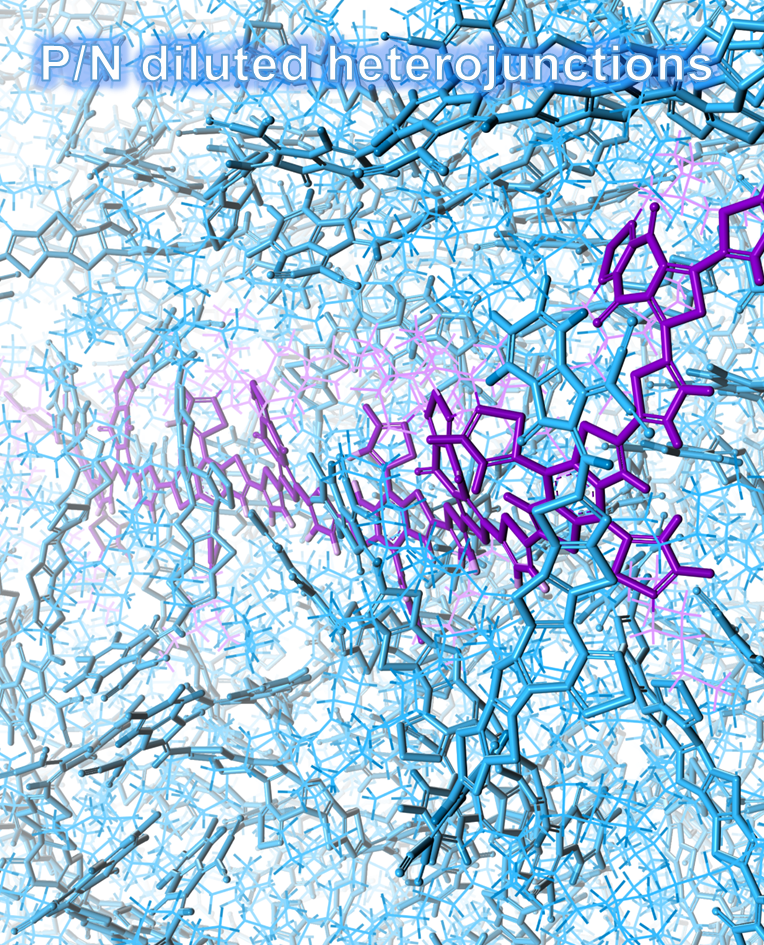Organic solar cells (OSCs) based upon organic semiconducting photoactive film promise low-cost, low-weight, and flexible photovoltaics, exhibiting promising prospect in portable power sources, wearable smart equipment and et al. Different to the traditional inorganic photovoltaics such as silicon and gallium arsenide, OSCs possess short exciton diffusion length and slow carrier transport, resulting in inferior power conversion efficiency (PCE). As such, state-of-the-art OSCs are structured upon a heterojunction photoactive layer consisting of electron donor and acceptor components, and it becomes crucial to understand and modulate their nanoscale morphology to further elevate PCE. Recently, researchers at Wuhan University of Technology reported a method of using p/n dilute heterojunctions to improve the molecular order of organic semiconducting films and PCE in their OSCs. With the support of the Shanghai Synchrotron Radiation Facility (SSRF) BL16B1 and BL14B1 beamlines, the underlying fundamentals of how using p/n dilute heterojunctions manipulate the molecular order, phase separation, and molecular packing configuration are clarified via the utilizing of grazing incidence wide-angle X-ray diffraction (GIWAXS) and grazing incidence small-angle X-ray scattering (GISAXS) techniques. The universality of this method was also validated in a series of organic photovoltaic systems, and a verified PCE of 19.1% was achieved.

附件下载:
